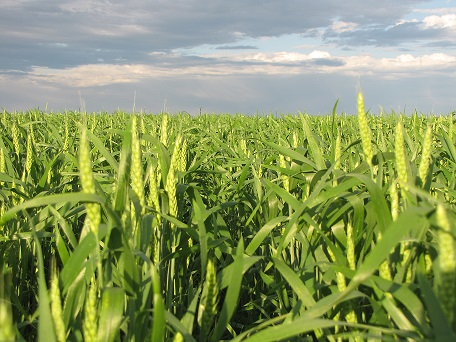Released on August 10, 2017
Producers in the province have two per cent of the crop combined and three per cent swathed or ready to straight-cut, according to Saskatchewan Agriculture’s Weekly Crop Report. The five-year (2012-2016) average for this time of year is two per cent combined and two per cent swathed or ready to straight-cut.
Seventy-five per cent of fall rye, 31 per cent of winter wheat, 11 per cent of field peas and 10 per cent of lentils are now in the bin. Five per cent of mustard and one per cent of canola has been swathed.
Harvest is most advanced in the southwest, where six per cent of the crop is now combined. Producers in the southeast have four per cent combined, while many producers in the central and northern regions expect to be in the field in the coming weeks.
The majority of the province received rainfall last week that has replenished topsoil moisture and helped later-seeded crops fill. Rainfall ranged from trace amounts to 80 mm in the Turtleford area. There were reports of heavy downpours in some areas of the north that have flooded fields, roads and yards. While the rain has been welcomed in some areas, it is too late to be of benefit in more southern areas where crops are rapidly drying down.
Topsoil moisture conditions have slightly improved with the recent rainfall. Across the province, topsoil moisture on cropland is rated as two per cent surplus, 36 per cent adequate, 38 per cent short and 24 per cent very short. Hay land and pasture topsoil moisture is rated as two per cent surplus, 29 per cent adequate, 34 per cent short and 35 per cent very short.
Hay yields are below average overall. Estimated average dryland hay yields for the province are one ton per acre for alfalfa and alfalfa/bromegrass; 0.83 tons per acre for other tame hay and 1.5 tons per acre for greenfeed. Estimated average irrigated hay yields are 2.3 tons per acre for alfalfa; 2.0 tons per acre for alfalfa/bromegrass and 3.1 tons per acre for greenfeed.
Crop damage this past week is mainly attributed to hail, localized flooding, strong winds and lack of moisture. Producers continue to spray for bertha armyworms and diamondback moths in canola fields.
Producers are getting ready for harvest and hauling bales.
For the complete crop report, please visit http://www.publications.gov.sk.ca/redirect.cfm?p=86544&i=100187.
Follow the 2017 Crop Report on Twitter at @SKAgriculture.
-30-
For more information, contact:
Shannon Friesen
Agriculture
Moose Jaw
Phone: 306-694-3592
Email: shannon.friesen@gov.sk.ca

